Top ratings
Get free trial access now Try first, then study!
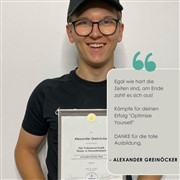
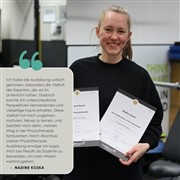

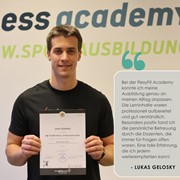
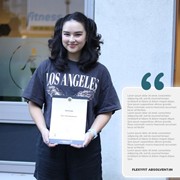
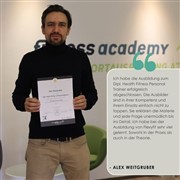
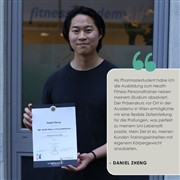
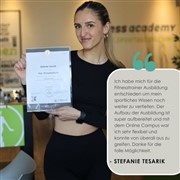
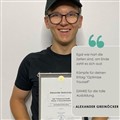
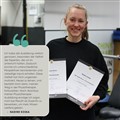
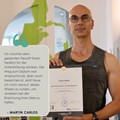
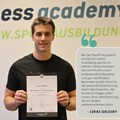

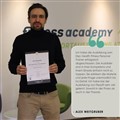

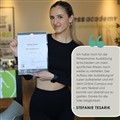

€ 2.290,- | Classroom Courses
» Our Course Packages
Important informations
Recognized & Certified
Our graduates, partners & friends say
Our team will be happy to advise you at any time by phone, chat or in person
If you decide to train as a swimming coach, you can expect an exciting, practical course with our specialist instructors, which includes everything you need to know to successfully coach swimmers from different disciplines and to manage training efficiently .
You will learn target group-specific training, analyze swimming movements with video recordings and learn how to interpret and correct various techniques.
Regardless of whether you work as a professional swimming coach or would like to optimize your own training: With the swimming coach training course, you will lay the first foundation stone in the right direction. and get everything you need for a successful start as a swimming coach. So, what are you waiting for?
If you would also like to expand your knowledge in the areas of running and cycling, then the advanced triathlon coach course is the right choice for you. In addition to the swimming coach module, this course also includes the two courses running coach and triathlon coach.
Extent of learning
534 E
EQF level
The training is based on EQF level 4 »
Course start
Possible immediately
Learning variant
Classroom Courses

| 27-12-2025 | € 2.290,-
| 27-12-2025 | € 2.290,-
| 27-12-2025 | € 2.290,-
| 27-12-2025 | € 2.290,-

Our swimming coach training course provides you with everything you need to start your career in the sport & health sector. Whether you want to work as a professional swimming coach or simply want to optimize your own training: With the Trainer A license, you are laying the first foundation stone in the right direction!
Benefit from the comprehensive specialist knowledge of our academic instructors on the subject of water sports in face-to-face course units.
In the introductory module, we will first get to know the basic concepts of anatomy, physiology and training science. In addition, nutrition-specific topics, professional aspects and first aid measures for sports injuries will play an important role in our training program.
During our practice-oriented teaching units, you will get to know different swimming styles and be able to analyze them with the help of video recordings. We will also take an in-depth look at strength training and movement theory, including practical exercises in the water to apply what you have learned directly.
After our training, you will be able to support aquatic athletes in their preparation for swimming competitions. Whether as a swimming instructor for adults and children or a coach for professional athletes, nothing stands in the way of your career.
Our certificates are valid worldwide and are issued in different versions. On request, you can receive our certificate in several languages (DE, EN, ES), with country-specific information and with or without printed grades.
All these variants are available to you free of charge for a lifetime for downloading from your online campus. In addition, depending on the learning package you have purchased, you will receive a certificate of your choice, which will be issued on high-quality special paper with embossed printing.
The following certificate will be awarded (in several languages DE, EN, ES):
We are happy to help you by phone, e-mail or chat . However, you may find the answer to your question in our general FAQ or swimming coach FAQ.
Extent of learning
200
Sports expertise
295
Presence | Self-study
6
Literature research
30
Practical realization
3
Additional tasks & examinations
Our training courses are generally eligible for funding. The relevant funding body will decide whether you are eligible for funding.
We will be happy to support you in compiling all the necessary course information you need for your funding application.
Of course, we will be on hand to advise you throughout the entire process and support you from the initial inquiry to the submission of your application. Contact us - we will make sure that you are as well prepared as possible!
Show all chapters of the subjects

We educate the best trainers in the fitness branch. From start to finish of the education - and beyond!- we support and guide our students.
Functional anatomy is a foundation necessary for all trainers in exercise, fitness and sports. This subject provides a comprehensive introduction to the anatomy of the human body and a wellspring of important knowledge.
The course is constructed to present the information in an interesting and comprehensible manner and features different learning approaches appropriate for Fitness and Personal Trainers.
The goal is, to understand the relationship between movement patterns, the human body and relevant anatomical terminology.

Our participants are introduced to the basics of sports nutrition.
As a foundation the composition of general nutrition including macro and micro nutrients, as well as the water balance, are discussed. In order to understand various correlations, the energy metabolism are explained in detail.
In addition, the effects of individual food components in the human body, as well as their importance in sports are covered.


More and more companies are integrating Corporate Wellness and similar health initiatives into their employee benefits packages. By doing so they promote the health and well-being of their employees, reducing the incidence of sick-leave and building healthier, stronger team dynamics.
Exactly why such initiatives are important is discussed in this introduction to the concept, as well as challenges that such initiatives face including organisational dysfunction.
Participants also learn about the advantages of corporate wellness and some trusted approaches and tools for finding and working with a company.
We offer suggestions on how to approach companies about Corporate Wellness, how to develop a corporate wellness concept and important organisational points to consider.
Participants will be exposed to some practical examples and will have the possiblity to perform group work on the topic.

The unit on Marketing and Customer Interaction gives participants some insight into identifying, working with and marketing to their ideal customer. This is one of the most useful units for the aspiring trainer, as it helps them identify their place in the market, which makes for a more successful career start.
We begin by taking a look at Marketing itself to understand exactly what it is and of what relevance it has for personal trainers.
Important basic concepts such as USP, positioning, target market, etc. are introduced and different models from marketing such as the SMART Formula, marketing mix (7Ps) and more are explained.
The communication between trainer and client is also addressed in this unit. Various aspects of communication theory and some guidelines for successful communication are covered.
Upon completion of this subject, participants are able to develop marketing strategies for their product and/or services, ready to position themselves in a market rich in variety and full of possibility!

A working understanding of human physiology and therefore the relationships between the various functions of the human body is crucial for anyone working in the exercise and fitness field. It is a requisite knowledge for the sufficient practice of their profession.
This course makes the relationships within the human organism graspable for everyone. Take a deep-dive into the human body and learn the functions of our organism for your new profession in fitness.
In this subject you will get a close look at energy metabolism needed for muscle activation, the circulatory system and the pulmonary system.
Any high quality education in fitness and exercise begins with the foundations of anatomy and physiology.

In this unit participants are prepared for successful communication with their clients on every level. In addition, we take a look at how the trainer or coach can go about dealing with their own goals and motives, which will in turn help them better understand their clients.
The right goal-setting and the proper approach to feedback are an important parts of this unit.
The way we manage stress as trainers and with our clients and a variety of learning strategies are explored so these skills can be integrated into your professional approach.

The first part of training theory teaches the basics of training, such as training principles, principles of training design, training methods and the factors of athletic performance.
As performance, performance diagnostics, training and competition are closely interrelated, they are also taught accordingly in the course.
In the second part of training theory, training is defined and evaluated as a complex action process and in connection with planning, execution and evaluation.
An important part of training theory is still the design of training plans, which is taught in practice with examples of the possibilities of designing a training plan.
In order to delve even deeper into training science, we have worked with top international speakers such as Prof. em. Dr. phil. Dr. med. Dr. h.c. Jürgen Weineck, we have also developed a video workshop on the subject of altitude training.
Show all chapters of the subjects

Teaching swimming techniques and the didactic design of lessons are among the core tasks of a swimming instructor. It is crucial to take into account the age, ability level, motivation and possible fears of the participants and to organize the lessons well in the pool.
The basis is the methodical structure: from the simple to the complex. The initial focus is on floating, gliding and breathing, followed by arm and leg technique and coordination. The differences between children's and adult training, the choice between group or individual training and a clear structure in the pool are central elements.
Participants learn how to design swimming sessions in a technically sensible and target group-oriented way. A practical trainer checklist at the end provides structure and security for your own teaching practice - an indispensable tool for anyone who wants to teach swimming successfully.
TECHNICAL TRAINING FOR ADULTS
CHILDREN'S WATER FAMILIARIZATION
DIDACTIC PRINCIPLES
GROUPS VS. INDIVIDUAL WORK
ORGANIZATION IN THE POOL

A successful swimming course depends not only on teaching technique, but above all on clear organization and a well thought-out structure. In order for training sessions to be effective, varied and motivating, a sound knowledge of structure, course design and feedback methods is required.
In this module, prospective swimming coaches learn how to plan swimming sessions sensibly, structure courses for different target groups and engage participants with motivation and a clear approach. Whether adults, advanced swimmers or triathletes - each group has its own requirements that need to be taken into account.
Through practical examples, discussions and the joint analysis of course plans, participants not only acquire theoretical knowledge, but also valuable tools for implementation in their own lessons.
At the end, they will receive a compact checklist for organization and practice, which will serve as a guide for their future swimming courses.
STRUCTURE OF A SWIMMING SESSION
STRUCTURE OF SWIMMING COURSES - ADULT & TRIATHLON GROUPS
MOTIVATION & FEEDBACK
PRACTICAL EXAMPLES - TRAINING PLANS
NOTES FOR THE PRESENTATION

In this course, you will learn what a versatile role you play in swimming lessons: You are not only a trainer, but also a motivator, safety expert and guide for your participants.
Special attention is paid to your tasks during training - from planning and implementation to correcting movements and providing individual support for children and adults. You will learn how to reach both target groups with the right approach and the differences between the role of a swimming coach and a swimming instructor.
A central part is also your responsibility in terms of safety and supervision. You will learn how to keep an overview even in heterogeneous groups, avoid accidents and create clear rules for a safe learning environment. Practical case studies will show you how to react to typical situations - from children with a fear of water to adults who are unsure in deep pools.
It also covers communication in the swimming pool: clear instructions despite noise and distance, targeted use of body language, gestures and visual aids. You will learn how to motivate children in a playful way and how to guide adults in an objective and solution-oriented manner.
ROLE & TASK OF THE SWIMMING COACH
RESPONSIBILITY, SAFETY & DUTY OF SUPERVISION
COMMUNICATION & COACHING IN SWIMMING TRAINING
PRESENTATION & METHODOLOGICAL TIPS

Targeted land training is essential to ensure that movements in the water can be performed powerfully, efficiently and injury-free. In this course, prospective swimming coaches learn how to increase the performance of their swimmers through specific strength and athletic training and at the same time create a stable basis for technique and endurance .
The focus is on the practical relevance to swimming. Strength exercises for the shoulder girdle, back, core and legs form the basis for sustainably improving the arm stroke, leg stroke and water position. The training is supplemented by stabilization exercises that promote a stable core and thus optimize power transfer and water position. Another focus is on mobility work for the shoulders and hips, which not only increases mobility, but also prevents injuries and facilitates technical sequences.
Participants learn how to combine strength, stability and mobility in a well thought-out athletics circuit and how to methodically build up land training units. Whether for individuals or entire groups - thanks to varied forms of exercise and flexible training plans, land training becomes an effective and motivating part of swimming training.
INTRODUCTION & STRENGTH EXERCISES FOR SWIMMERS
STABILIZATION & CORE STRENGTH
MOBILITY FOR SHOULDERS & HIPS
ATHLETIC CIRCUIT & TRAINING PLANNING
TIPS FOR THE PRESENTATION

The breaststroke is considered the most complex of all swimming techniques. Arm stroke, leg stroke, breathing and the gliding phase must be precisely coordinated to enable efficient and clean movement in the water. In this course, prospective swimming coaches learn the methodical structure of teaching the technique and receive practical tools for successfully teaching breaststroke.
The course starts by working on the basics: water position, body tension and the correct sequence of movements according to the principle of "pull - breathe - kick - glide". Building on this, arm and leg movements and breathing are introduced step by step and linked methodically. Error recognition is also a central component. Typical problems such as "scissor legs", too hectic breathing or incorrect arm movements are addressed and corrected through targeted corrective exercises and the use of aids.
The next step is to make the technique more economical. Participants learn how to achieve an efficient swimming position, reduce unnecessary movements and use the gliding phase to cover more distance with less effort. This economical approach is particularly important for triathletes and fitness swimmers in order to save energy and increase performance in the long term.
BASICS & WATER POSITION
ARM PULL, LEG KICK & BREATHING
ERROR DETECTION & CORRECTION
INCREASING EFFICIENCY IN BREASTSTROKE
PRESENTATION & TIPS

The dolphin swimming style is probably the most demanding and at the same time most elegant discipline in swimming. It requires not only strength, but above all coordination, a sense of rhythm and stable body tension. In this course, prospective swimming coaches learn how to methodically build up the complex whole-body movement and teach it to their swimmers step by step.
The focus is on the wave movement, which is initiated from the hips and continues through the entire body. Building on this basic movement, the arm stroke, leg stroke and breathing are gradually integrated into the technique. In addition to the basics in the water, the course also includes special exercises on land that promote an understanding of movement and make it easier to get started.
Another focus is on the underwater phase, which plays a central role especially after starts and turns. Here, participants learn how to use the dolphin kick efficiently in order to carry speed and momentum with them. This is followed by the combination of all movement sequences into an overall position, whereby the focus is on technical quality and fluid coordination - not speed.
At the end of the course, participants will have a structured concept for teaching the dolphin style in a practical and methodical manner. With a variety of drills, partner exercises and creative approaches, they can introduce this special swimming style to swimmers of all levels and integrate it into their repertoire as effective technique and coordination training.
OVERVIEW & TECHNICAL BASICS DOLPHIN
WATER WAVE & WHOLE BODY COORDINATION
TRANSITION & UNDERWATER PHASE
COMBINATION & OVERALL POSITION
SUMMARY & FEEDBACK

The focus is on the basics of the water position, the importance of body tension and the interplay of arm stroke, leg stroke and breathing. Practice-oriented drills help to make movement sequences understandable and promote coordination between the individual technical components. The course also teaches coaches how to quickly recognize mistakes and correct them using visual, verbal or tactile aids.
Another focus is open water swimming, which plays a special role in triathlons and open waters. Here, participants learn how to integrate orientation, safety and tactical aspects such as buoy maneuvers or group starts into their training.
FOUNDATION & WATER POSITION CRAWL
LEG KICK (FLUTTER KICK)
ARM PULL (PULL & CATCH)
BREATHING & RHYTHM
INTEGRATION - OVERALL CRAWL MOVEMENT
OPEN WATER SWIMMING I - ORIENTATION & SAFETY
OPEN WATER SWIMMING II - BUOYS & TRIATHLON SIMULATION
FEEDBACK & SAFETY

The backstroke is a technique that appears simpler at first glance, but in practice requires the utmost precision . A stable position in the water, a calm head position and even coordination of the arm stroke and leg stroke are the basis for a clean swimming style. In this course, prospective swimming coaches learn how to methodically build up the basics and introduce swimmers to this technique step by step.
In addition to teaching the movement phases, the focus is on correct breathing, which can be done without forced breathing in the backstroke. Participants learn how to train the rhythm between arm stroke and leg stroke with targeted exercises and how to recognize and correct typical errors such as sinking hips, unsteady head position or asymmetrical leg stroke.
In addition, backstroke is treated as a balancing technique. It is not only suitable for technique training, but also for regeneration and active recovery, especially for triathletes and frequent swimmers. Participants learn how to integrate backstroke into training sessions in a meaningful way, whether as a cool-down, in combination with other strokes or as a playful exercise for motivation.
BASICS & WATER POSITION IN BACKSTROKE
ARM PULL & BREATHING
ERROR DETECTION & CORRECTION
BACKSTROKE AS A BALANCING & RELIEF TECHNIQUE

Effective swimming training is based on targeted planning and load management . In this course, prospective swimming coaches learn how to structure training sessions sensibly, adapt loads and optimally support different target groups.
The focus is on the basics of training theory: swimming goals, stress factors and the differences between children, adults and triathletes. In practice, technique and endurance training are compared, interval methods are tested and strength and speed elements are integrated into training.
In addition, the focus is on turnarounds, push-off techniques and the practical application of progression and periodization. Participants practise how to design training for different performance levels, organize station training and always keep an eye on motivation and efficiency.
BASICS OF TRAINING THEORY
TECHNIQUE & ENDURANCE TRAINING
INTERVAL, STRENGTH & SPEED TRAINING
TURNS, KICK OFF & TRAINING PROGRESSION
PRACTICE-ORIENTED TRAINING DESIGN

Video analysis is a valuable tool in swimming lessons to make technique visible and effectively support the learning process. Precisely because self-perception often differs greatly from the actual movement, it provides both beginners and experienced swimmers with objective feedback and makes progress measurable.
In the course, participants learn what is important in the analysis: water position, arm stroke, leg stroke, breathing and rhythm are systematically examined and typical error patterns are identified for each swimming style. Step by step, the prospective coaches practise not only recognizing errors, but also understanding their causes and selecting suitable correction methods. Great emphasis is placed on comprehensible, motivating and solution-oriented feedback.
In addition to analysis, the focus is also on practical implementation. Participants apply their knowledge to real video examples, develop specific corrections and practise dealing with feedback situations. In this way, they acquire the ability to present their observations clearly and translate them into individual training instructions. At the end of this module, they will have mastered video analysis as a practical tool that can be used to specifically improve technical deficits and make learning progress visible.
WHY A VIDEO ANALYSIS?
RECOGNIZE & MAKE TECHNOLOGY VISIBLE
CORRECTION METHODS - STEP BY STEP
PRACTICAL IMPLEMENTATION & FEEDBACK TRAINING
Available course variations
Language of Instruction
Course Module
Fitness Fundamentals
Fitness basics (presence)
Fitness Fundamentals Full HD Video Lessons
Course Module Full HD Video Lessons
Course Modality
Study Method
Auditory & Visual Learning Style
Communicative & Kinesthetic Learning Style
Study Timeframe
Text & Presentation PDFs
Support via Online Campus, E-mail, Chat, Tel.
WhatsApp & On-site Support
Test/Dummy Exam
NADA Austria
Altitude Training - Prof. Dr. Weineck
Fitness Fundamentals Theory Exams Online
Final Exam
Certificate in DE, EN or ES
Certificate accepted worldwide & never expires
Lifetime Access to Online Campus
Free Demo Account / Trial Package
Certificate Copy as Downloadable PDF
Certificate with Verification via QR-Code
Financial Aid/Grant Opportunities
Paid Educational Leave (AT)
Grants for Businesses
Grants for Self-Employed Persons
Course Advising
Cost Estimate for Financial Aid Provider
Job Openings Mailing List
Comprehensive Training Opportunities
Absolute Best Price & Service Offer
EN
Group attendance course
online
Optionally bookable
314
postable
online/presence
visual/motor
well suited
well suited
flexible + dates
postable
Flexible date
up to 100%
non-binding
DE, EN
Individual lessons
online
contain
314
One2One
visual/motor
suitable
recommended
individual
contain
individual
up to 100%
non-binding
There are a variety of funding options for training courses at the Flexyfit Sports Academy. State-specific and EU funding as well as tax-related options form the basis for this.
However, we would like to point out that the respective funding body is solely responsible for deciding on the allocation or amount of funding.
We will be happy to help you find a suitable funding body and compile all the course information you need for a funding application. You must submit the application itself to the funding bodies.
Depending on the funding institution, the training costs are either paid directly after the funding application has been confirmed (e.g. AMS) or reimbursed in full or in part after successful completion of the training (e.g. waff). Please contact the funding institutions yourself to find out how the funding works.
Yes, the majority of our courses are suitable for educational leave.
If you want to continue your education without terminating your employment, you can arrange educational leave with your employer. This means that you will be released from work for the duration of your training.
Plan your educational leave with us now! We will be happy to clarify your individual training requirements with you in a personal, non-binding consultation.
You can take your educational leave for a maximum of 1 year within 4 years - there are 3 options:
It is important that your employer agrees to you taking educational leave. You must provide evidence of the training plans issued by us to the extent of 20 hours per week in the case of full-time educational leave, or at least 10 hours in the case of part-time educational leave.
You must regularly provide evidence of the progress of your training. For example, in the form of examinations or confirmation of attendance, which you will receive from us.
Swimming coaches give swimming lessons to individuals or groups. They teach various swimming techniques, such as breaststroke, crawl, backstroke and dolphin. The coach analyzes the customer's swimming movements, often using video recordings, in order to correct any mistakes and develop a clean technique.
The average salary of a swimming instructor in a permanent position is €1,980 gross per month. However, the focus is more on swimming lessons for groups. If you become self-employed as a swimming coach and prepare athletes professionally for competitions, your income will be significantly higher. You can charge around €65 for an individual lesson. However, it must be taken into account that the entrance fee to the swimming pool must also be covered.
Swimming coaches usually work independently or in cooperation or permanent employment with swimming and sports schools as well as in indoor and outdoor swimming pools. Swimming coaches and swimming instructors are also often employed by swimming, gymnastics and sports clubs as well as hotels with wellness and fitness facilities.
We regularly list job advertisements from fitness studios on our sports careers platform. There you can apply directly for jobs as a fitness trainer, branch manager, instructor or studio employee.

Our swimming coach training course provides you with everything you need to start your career in the sport & health sector. Whether you want to work as a professional swimming coach or simply want to optimize your own training: With the Trainer A license, you are laying the first foundation stone in the right direction!
Benefit from the comprehensive specialist knowledge of our academic instructors on the subject of water sports in face-to-face course units.
In the introductory module, we will first get to know the basic concepts of anatomy, physiology and training science. In addition, nutrition-specific topics, professional aspects and first aid measures for sports injuries will play an important role in our training program.
During our practice-oriented teaching units, you will get to know different swimming styles and be able to analyze them with the help of video recordings. We will also take an in-depth look at strength training and movement theory, including practical exercises in the water to apply what you have learned directly.
After our training, you will be able to support aquatic athletes in their preparation for swimming competitions. Whether as a swimming instructor for adults and children or a coach for professional athletes, nothing stands in the way of your career.
Our certificates are valid worldwide and are issued in different versions. On request, you can receive our certificate in several languages (DE, EN, ES), with country-specific information and with or without printed grades.
All these variants are available to you free of charge for a lifetime for downloading from your online campus. In addition, depending on the learning package you have purchased, you will receive a certificate of your choice, which will be issued on high-quality special paper with embossed printing.
The following certificate will be awarded (in several languages DE, EN, ES):
We are happy to help you by phone, e-mail or chat . However, you may find the answer to your question in our general FAQ or swimming coach FAQ.
Extent of learning
200
Sports expertise
295
Presence | Self-study
6
Literature research
30
Practical realization
3
Additional tasks & examinations
Our training courses are generally eligible for funding. The relevant funding body will decide whether you are eligible for funding.
We will be happy to support you in compiling all the necessary course information you need for your funding application.
Of course, we will be on hand to advise you throughout the entire process and support you from the initial inquiry to the submission of your application. Contact us - we will make sure that you are as well prepared as possible!
Show all chapters of the subjects

We educate the best trainers in the fitness branch. From start to finish of the education - and beyond!- we support and guide our students.
Functional anatomy is a foundation necessary for all trainers in exercise, fitness and sports. This subject provides a comprehensive introduction to the anatomy of the human body and a wellspring of important knowledge.
The course is constructed to present the information in an interesting and comprehensible manner and features different learning approaches appropriate for Fitness and Personal Trainers.
The goal is, to understand the relationship between movement patterns, the human body and relevant anatomical terminology.

Our participants are introduced to the basics of sports nutrition.
As a foundation the composition of general nutrition including macro and micro nutrients, as well as the water balance, are discussed. In order to understand various correlations, the energy metabolism are explained in detail.
In addition, the effects of individual food components in the human body, as well as their importance in sports are covered.


More and more companies are integrating Corporate Wellness and similar health initiatives into their employee benefits packages. By doing so they promote the health and well-being of their employees, reducing the incidence of sick-leave and building healthier, stronger team dynamics.
Exactly why such initiatives are important is discussed in this introduction to the concept, as well as challenges that such initiatives face including organisational dysfunction.
Participants also learn about the advantages of corporate wellness and some trusted approaches and tools for finding and working with a company.
We offer suggestions on how to approach companies about Corporate Wellness, how to develop a corporate wellness concept and important organisational points to consider.
Participants will be exposed to some practical examples and will have the possiblity to perform group work on the topic.

The unit on Marketing and Customer Interaction gives participants some insight into identifying, working with and marketing to their ideal customer. This is one of the most useful units for the aspiring trainer, as it helps them identify their place in the market, which makes for a more successful career start.
We begin by taking a look at Marketing itself to understand exactly what it is and of what relevance it has for personal trainers.
Important basic concepts such as USP, positioning, target market, etc. are introduced and different models from marketing such as the SMART Formula, marketing mix (7Ps) and more are explained.
The communication between trainer and client is also addressed in this unit. Various aspects of communication theory and some guidelines for successful communication are covered.
Upon completion of this subject, participants are able to develop marketing strategies for their product and/or services, ready to position themselves in a market rich in variety and full of possibility!

A working understanding of human physiology and therefore the relationships between the various functions of the human body is crucial for anyone working in the exercise and fitness field. It is a requisite knowledge for the sufficient practice of their profession.
This course makes the relationships within the human organism graspable for everyone. Take a deep-dive into the human body and learn the functions of our organism for your new profession in fitness.
In this subject you will get a close look at energy metabolism needed for muscle activation, the circulatory system and the pulmonary system.
Any high quality education in fitness and exercise begins with the foundations of anatomy and physiology.

In this unit participants are prepared for successful communication with their clients on every level. In addition, we take a look at how the trainer or coach can go about dealing with their own goals and motives, which will in turn help them better understand their clients.
The right goal-setting and the proper approach to feedback are an important parts of this unit.
The way we manage stress as trainers and with our clients and a variety of learning strategies are explored so these skills can be integrated into your professional approach.

The first part of training theory teaches the basics of training, such as training principles, principles of training design, training methods and the factors of athletic performance.
As performance, performance diagnostics, training and competition are closely interrelated, they are also taught accordingly in the course.
In the second part of training theory, training is defined and evaluated as a complex action process and in connection with planning, execution and evaluation.
An important part of training theory is still the design of training plans, which is taught in practice with examples of the possibilities of designing a training plan.
In order to delve even deeper into training science, we have worked with top international speakers such as Prof. em. Dr. phil. Dr. med. Dr. h.c. Jürgen Weineck, we have also developed a video workshop on the subject of altitude training.
Show all chapters of the subjects

Teaching swimming techniques and the didactic design of lessons are among the core tasks of a swimming instructor. It is crucial to take into account the age, ability level, motivation and possible fears of the participants and to organize the lessons well in the pool.
The basis is the methodical structure: from the simple to the complex. The initial focus is on floating, gliding and breathing, followed by arm and leg technique and coordination. The differences between children's and adult training, the choice between group or individual training and a clear structure in the pool are central elements.
Participants learn how to design swimming sessions in a technically sensible and target group-oriented way. A practical trainer checklist at the end provides structure and security for your own teaching practice - an indispensable tool for anyone who wants to teach swimming successfully.
TECHNICAL TRAINING FOR ADULTS
CHILDREN'S WATER FAMILIARIZATION
DIDACTIC PRINCIPLES
GROUPS VS. INDIVIDUAL WORK
ORGANIZATION IN THE POOL

A successful swimming course depends not only on teaching technique, but above all on clear organization and a well thought-out structure. In order for training sessions to be effective, varied and motivating, a sound knowledge of structure, course design and feedback methods is required.
In this module, prospective swimming coaches learn how to plan swimming sessions sensibly, structure courses for different target groups and engage participants with motivation and a clear approach. Whether adults, advanced swimmers or triathletes - each group has its own requirements that need to be taken into account.
Through practical examples, discussions and the joint analysis of course plans, participants not only acquire theoretical knowledge, but also valuable tools for implementation in their own lessons.
At the end, they will receive a compact checklist for organization and practice, which will serve as a guide for their future swimming courses.
STRUCTURE OF A SWIMMING SESSION
STRUCTURE OF SWIMMING COURSES - ADULT & TRIATHLON GROUPS
MOTIVATION & FEEDBACK
PRACTICAL EXAMPLES - TRAINING PLANS
NOTES FOR THE PRESENTATION

In this course, you will learn what a versatile role you play in swimming lessons: You are not only a trainer, but also a motivator, safety expert and guide for your participants.
Special attention is paid to your tasks during training - from planning and implementation to correcting movements and providing individual support for children and adults. You will learn how to reach both target groups with the right approach and the differences between the role of a swimming coach and a swimming instructor.
A central part is also your responsibility in terms of safety and supervision. You will learn how to keep an overview even in heterogeneous groups, avoid accidents and create clear rules for a safe learning environment. Practical case studies will show you how to react to typical situations - from children with a fear of water to adults who are unsure in deep pools.
It also covers communication in the swimming pool: clear instructions despite noise and distance, targeted use of body language, gestures and visual aids. You will learn how to motivate children in a playful way and how to guide adults in an objective and solution-oriented manner.
ROLE & TASK OF THE SWIMMING COACH
RESPONSIBILITY, SAFETY & DUTY OF SUPERVISION
COMMUNICATION & COACHING IN SWIMMING TRAINING
PRESENTATION & METHODOLOGICAL TIPS

Targeted land training is essential to ensure that movements in the water can be performed powerfully, efficiently and injury-free. In this course, prospective swimming coaches learn how to increase the performance of their swimmers through specific strength and athletic training and at the same time create a stable basis for technique and endurance .
The focus is on the practical relevance to swimming. Strength exercises for the shoulder girdle, back, core and legs form the basis for sustainably improving the arm stroke, leg stroke and water position. The training is supplemented by stabilization exercises that promote a stable core and thus optimize power transfer and water position. Another focus is on mobility work for the shoulders and hips, which not only increases mobility, but also prevents injuries and facilitates technical sequences.
Participants learn how to combine strength, stability and mobility in a well thought-out athletics circuit and how to methodically build up land training units. Whether for individuals or entire groups - thanks to varied forms of exercise and flexible training plans, land training becomes an effective and motivating part of swimming training.
INTRODUCTION & STRENGTH EXERCISES FOR SWIMMERS
STABILIZATION & CORE STRENGTH
MOBILITY FOR SHOULDERS & HIPS
ATHLETIC CIRCUIT & TRAINING PLANNING
TIPS FOR THE PRESENTATION

The breaststroke is considered the most complex of all swimming techniques. Arm stroke, leg stroke, breathing and the gliding phase must be precisely coordinated to enable efficient and clean movement in the water. In this course, prospective swimming coaches learn the methodical structure of teaching the technique and receive practical tools for successfully teaching breaststroke.
The course starts by working on the basics: water position, body tension and the correct sequence of movements according to the principle of "pull - breathe - kick - glide". Building on this, arm and leg movements and breathing are introduced step by step and linked methodically. Error recognition is also a central component. Typical problems such as "scissor legs", too hectic breathing or incorrect arm movements are addressed and corrected through targeted corrective exercises and the use of aids.
The next step is to make the technique more economical. Participants learn how to achieve an efficient swimming position, reduce unnecessary movements and use the gliding phase to cover more distance with less effort. This economical approach is particularly important for triathletes and fitness swimmers in order to save energy and increase performance in the long term.
BASICS & WATER POSITION
ARM PULL, LEG KICK & BREATHING
ERROR DETECTION & CORRECTION
INCREASING EFFICIENCY IN BREASTSTROKE
PRESENTATION & TIPS

The dolphin swimming style is probably the most demanding and at the same time most elegant discipline in swimming. It requires not only strength, but above all coordination, a sense of rhythm and stable body tension. In this course, prospective swimming coaches learn how to methodically build up the complex whole-body movement and teach it to their swimmers step by step.
The focus is on the wave movement, which is initiated from the hips and continues through the entire body. Building on this basic movement, the arm stroke, leg stroke and breathing are gradually integrated into the technique. In addition to the basics in the water, the course also includes special exercises on land that promote an understanding of movement and make it easier to get started.
Another focus is on the underwater phase, which plays a central role especially after starts and turns. Here, participants learn how to use the dolphin kick efficiently in order to carry speed and momentum with them. This is followed by the combination of all movement sequences into an overall position, whereby the focus is on technical quality and fluid coordination - not speed.
At the end of the course, participants will have a structured concept for teaching the dolphin style in a practical and methodical manner. With a variety of drills, partner exercises and creative approaches, they can introduce this special swimming style to swimmers of all levels and integrate it into their repertoire as effective technique and coordination training.
OVERVIEW & TECHNICAL BASICS DOLPHIN
WATER WAVE & WHOLE BODY COORDINATION
TRANSITION & UNDERWATER PHASE
COMBINATION & OVERALL POSITION
SUMMARY & FEEDBACK

The focus is on the basics of the water position, the importance of body tension and the interplay of arm stroke, leg stroke and breathing. Practice-oriented drills help to make movement sequences understandable and promote coordination between the individual technical components. The course also teaches coaches how to quickly recognize mistakes and correct them using visual, verbal or tactile aids.
Another focus is open water swimming, which plays a special role in triathlons and open waters. Here, participants learn how to integrate orientation, safety and tactical aspects such as buoy maneuvers or group starts into their training.
FOUNDATION & WATER POSITION CRAWL
LEG KICK (FLUTTER KICK)
ARM PULL (PULL & CATCH)
BREATHING & RHYTHM
INTEGRATION - OVERALL CRAWL MOVEMENT
OPEN WATER SWIMMING I - ORIENTATION & SAFETY
OPEN WATER SWIMMING II - BUOYS & TRIATHLON SIMULATION
FEEDBACK & SAFETY

The backstroke is a technique that appears simpler at first glance, but in practice requires the utmost precision . A stable position in the water, a calm head position and even coordination of the arm stroke and leg stroke are the basis for a clean swimming style. In this course, prospective swimming coaches learn how to methodically build up the basics and introduce swimmers to this technique step by step.
In addition to teaching the movement phases, the focus is on correct breathing, which can be done without forced breathing in the backstroke. Participants learn how to train the rhythm between arm stroke and leg stroke with targeted exercises and how to recognize and correct typical errors such as sinking hips, unsteady head position or asymmetrical leg stroke.
In addition, backstroke is treated as a balancing technique. It is not only suitable for technique training, but also for regeneration and active recovery, especially for triathletes and frequent swimmers. Participants learn how to integrate backstroke into training sessions in a meaningful way, whether as a cool-down, in combination with other strokes or as a playful exercise for motivation.
BASICS & WATER POSITION IN BACKSTROKE
ARM PULL & BREATHING
ERROR DETECTION & CORRECTION
BACKSTROKE AS A BALANCING & RELIEF TECHNIQUE

Effective swimming training is based on targeted planning and load management . In this course, prospective swimming coaches learn how to structure training sessions sensibly, adapt loads and optimally support different target groups.
The focus is on the basics of training theory: swimming goals, stress factors and the differences between children, adults and triathletes. In practice, technique and endurance training are compared, interval methods are tested and strength and speed elements are integrated into training.
In addition, the focus is on turnarounds, push-off techniques and the practical application of progression and periodization. Participants practise how to design training for different performance levels, organize station training and always keep an eye on motivation and efficiency.
BASICS OF TRAINING THEORY
TECHNIQUE & ENDURANCE TRAINING
INTERVAL, STRENGTH & SPEED TRAINING
TURNS, KICK OFF & TRAINING PROGRESSION
PRACTICE-ORIENTED TRAINING DESIGN

Video analysis is a valuable tool in swimming lessons to make technique visible and effectively support the learning process. Precisely because self-perception often differs greatly from the actual movement, it provides both beginners and experienced swimmers with objective feedback and makes progress measurable.
In the course, participants learn what is important in the analysis: water position, arm stroke, leg stroke, breathing and rhythm are systematically examined and typical error patterns are identified for each swimming style. Step by step, the prospective coaches practise not only recognizing errors, but also understanding their causes and selecting suitable correction methods. Great emphasis is placed on comprehensible, motivating and solution-oriented feedback.
In addition to analysis, the focus is also on practical implementation. Participants apply their knowledge to real video examples, develop specific corrections and practise dealing with feedback situations. In this way, they acquire the ability to present their observations clearly and translate them into individual training instructions. At the end of this module, they will have mastered video analysis as a practical tool that can be used to specifically improve technical deficits and make learning progress visible.
WHY A VIDEO ANALYSIS?
RECOGNIZE & MAKE TECHNOLOGY VISIBLE
CORRECTION METHODS - STEP BY STEP
PRACTICAL IMPLEMENTATION & FEEDBACK TRAINING
Available course variations
Language of Instruction
Course Module
Fitness Fundamentals
Fitness basics (presence)
Fitness Fundamentals Full HD Video Lessons
Course Module Full HD Video Lessons
Course Modality
Study Method
Auditory & Visual Learning Style
Communicative & Kinesthetic Learning Style
Study Timeframe
Text & Presentation PDFs
Support via Online Campus, E-mail, Chat, Tel.
WhatsApp & On-site Support
Test/Dummy Exam
NADA Austria
Altitude Training - Prof. Dr. Weineck
Fitness Fundamentals Theory Exams Online
Final Exam
Certificate in DE, EN or ES
Certificate accepted worldwide & never expires
Lifetime Access to Online Campus
Free Demo Account / Trial Package
Certificate Copy as Downloadable PDF
Certificate with Verification via QR-Code
Financial Aid/Grant Opportunities
Paid Educational Leave (AT)
Grants for Businesses
Grants for Self-Employed Persons
Course Advising
Cost Estimate for Financial Aid Provider
Job Openings Mailing List
Comprehensive Training Opportunities
Absolute Best Price & Service Offer
EN
Group attendance course
online
Optionally bookable
314
postable
online/presence
visual/motor
well suited
well suited
flexible + dates
postable
Flexible date
up to 100%
non-binding
DE, EN
Individual lessons
online
contain
314
One2One
visual/motor
suitable
recommended
individual
contain
individual
up to 100%
non-binding
There are a variety of funding options for training courses at the Flexyfit Sports Academy. State-specific and EU funding as well as tax-related options form the basis for this.
However, we would like to point out that the respective funding body is solely responsible for deciding on the allocation or amount of funding.
We will be happy to help you find a suitable funding body and compile all the course information you need for a funding application. You must submit the application itself to the funding bodies.
Depending on the funding institution, the training costs are either paid directly after the funding application has been confirmed (e.g. AMS) or reimbursed in full or in part after successful completion of the training (e.g. waff). Please contact the funding institutions yourself to find out how the funding works.
Yes, the majority of our courses are suitable for educational leave.
If you want to continue your education without terminating your employment, you can arrange educational leave with your employer. This means that you will be released from work for the duration of your training.
Plan your educational leave with us now! We will be happy to clarify your individual training requirements with you in a personal, non-binding consultation.
You can take your educational leave for a maximum of 1 year within 4 years - there are 3 options:
It is important that your employer agrees to you taking educational leave. You must provide evidence of the training plans issued by us to the extent of 20 hours per week in the case of full-time educational leave, or at least 10 hours in the case of part-time educational leave.
You must regularly provide evidence of the progress of your training. For example, in the form of examinations or confirmation of attendance, which you will receive from us.
Swimming coaches give swimming lessons to individuals or groups. They teach various swimming techniques, such as breaststroke, crawl, backstroke and dolphin. The coach analyzes the customer's swimming movements, often using video recordings, in order to correct any mistakes and develop a clean technique.
The average salary of a swimming instructor in a permanent position is €1,980 gross per month. However, the focus is more on swimming lessons for groups. If you become self-employed as a swimming coach and prepare athletes professionally for competitions, your income will be significantly higher. You can charge around €65 for an individual lesson. However, it must be taken into account that the entrance fee to the swimming pool must also be covered.
Swimming coaches usually work independently or in cooperation or permanent employment with swimming and sports schools as well as in indoor and outdoor swimming pools. Swimming coaches and swimming instructors are also often employed by swimming, gymnastics and sports clubs as well as hotels with wellness and fitness facilities.
We regularly list job advertisements from fitness studios on our sports careers platform. There you can apply directly for jobs as a fitness trainer, branch manager, instructor or studio employee.

2 weeks ago
Very well organized team, uncomplicated operation of online lessons, versatile informative script :) All in all top!
posted on
2 weeks ago
I am very impressed with Flexyfit, always nice and helpful people. Very sympathetic. Thank you very much for your great support.
posted on
3 weeks ago
Great training and super nice people. You can tell how much emphasis is placed on conveying the necessary knowledge to the course participants in an understandable way. I was even kindly allowed to take a course completely free of charge after there were somewhat problematic and disruptive participants in my group. I will 100% take more courses with you in the future because learning is extremely fun, especially thanks to the friendly staff!
posted on
3 weeks ago
The entire flexyfit team is extremely friendly, prompt and helpful. The lecturers are competent and respond to the course participants. All learning materials were provided clearly and in sufficient detail. The additional videos mean there is something for every type of learner. All in all, the training and exam went well. I can definitely recommend flexyfit and will be happy to book and recommend further training courses with you again!
posted on
a months ago
A great team - competent, friendly, always helpful and supportive - provided excellent support for the practical training. We recommend! :)
posted on
a months ago
Great support and extensive course content. We recommend!
posted on
a months ago
I really enjoyed training to become a B-license fitness trainer there. The teaching materials provided are great and flawless. I learned a lot of new things there and always enjoyed what I was doing. The team is great and is always there for you if you have any questions!
posted on
a month ago
The best thing that could have happened to me is this academy. Access to participants is excellent. All employees are very competent, very professional and very friendly. A person can learn so much that it is indescribably good. I would recommend it to everyone. When I arrived in Austria I was looking for something like this and luckily I found this academy and signed up for the course without hesitation. Everything we get in return is worth 100 times more than what we pay. Indescribable experience, indescribable people, once again and 1000 times I say: Thank you for everything, thank you for this indescribable experience. THANK YOU, THANK YOU, THANK YOU
posted on
a months ago
I was able to learn a lot of new things as part of my training at the Flexyfit Academy and was able to take on a new, demanding challenge with my chosen course. The structure of the training courses is very understandable and clear, so that you can master the distance learning course on your own without any problems. If there were any questions, ambiguities or isolated problems, the Academy team was always quick to help and we could always find a common solution. Here and there I would have liked a little more practical relevance. Nevertheless, I always felt very comfortable, had great speakers and with my degree as a qualified medical sports coach, many new doors are now open to me :)
posted on
2 months ago
I was able to complete my chosen course very well and quickly. The team is very quick and courteous and you are always offered a good solution if there are any uncertainties. I will book again when I get the chance and can recommend the academy!
posted on
"Flexyfit - flexible learning, fit for the future."

Please select a learning variant or enter a search text!